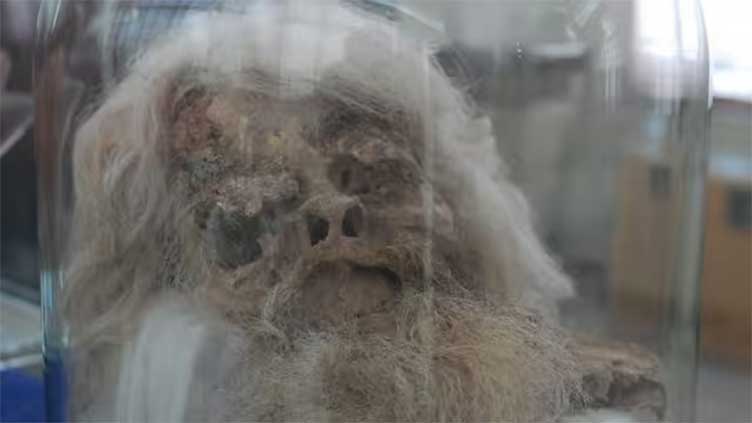Horrifying remains found frozen with their mouths open in Iranian mine

WeirdNews
'Saltmen mummies' found
(Web Desk) - An ancient salt mine in Iran preserved dead miners for years in grisly states, some of them frozen as they released their final screams before being buried alive.
These "Saltmen" look like zombies and date at least as far back as 550–330 BC. The mummies belong to the time when the region was ruled by its first empire: Persia's Achaemenid Dynasty.
The Saltmen were believed to have been mining for salt when the mine collapsed, burying them alive, and their horrifying remains were found frozen, with their mouths open, capturing their final screams as they died.
The salt in the mine preserved the remains, which were unearthed over a period of time, starting in 1993.
The salt-preserved specimens included a 1,600-year-old mummified sheep.
Most of the eight mummified Iranian Saltmen existed during the reign of the Achaemenid empire. However, the Achaemenid mine was abandoned after a mining catastrophe killed three miners "between 405 and 380 BC". It reportedly remained shut for over two centuries.
But the mine collapse victims were well-preserved and turned into mummies by the salt. "In the case of the salt mummies, the mummification process was induced by salt," paleo-pathologist Dr Lena Öhrström and her co-authors from the University of Zurich's Mummy Studies Group said in a study.
Experts say that the "salt dome" deposit was being used by several people who lived in the region across ages. The new study aimed to understand how far back was the mine being used.
They gathered data from 18 nearby archaeological dig sites, spanning periods from prehistory to the Islamic period.
Even though the oldest settlements here date back to the Chalcolithic or 'Copper Age' around 5,000–4,000 BC, including one from the Stone Age, there is no evidence to prove that these prehistoric communities were mining the salt.
An international team of researchers comprising Dr Öhrström and her Mummy Studies Group colleagues, and Iranian archeologist Hamed Zifar from the Zolfaghari Archaeological Museum, are intrigued by the absence of prehistoric evidence.
"Does the lack of evidence relate to a type of underground exploitation that is different from surface salt collection," the team asks in the article published in the Journal of World Prehistory.
The other idea is that there were no administrative and governance structures to exploit the salt. The study concludes that the salt was either being mined by the Stone and Copper Age communities using methods that the modern man knows nothing about, or they were simply not interested in using it.


